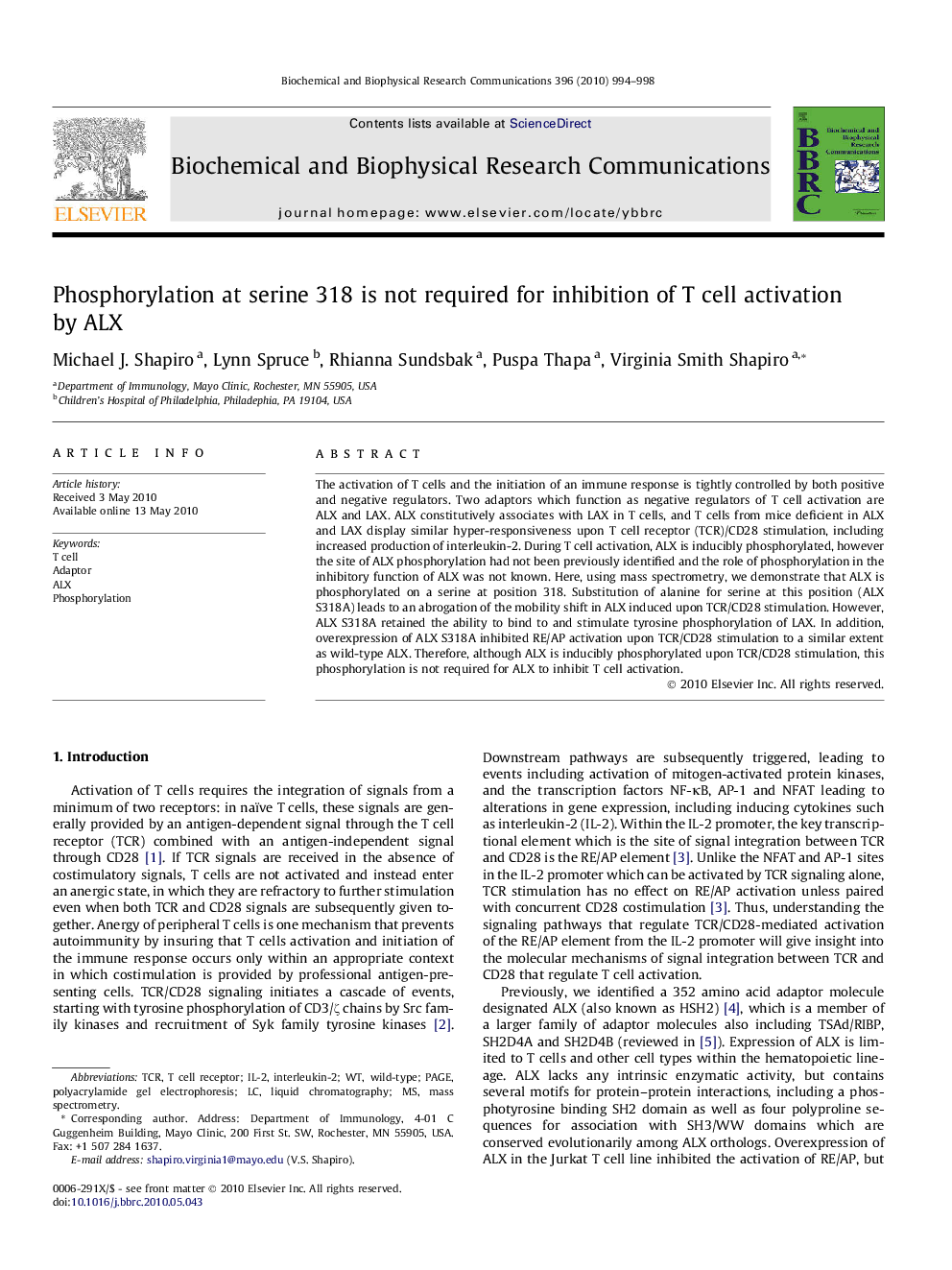| Article ID | Journal | Published Year | Pages | File Type |
|---|---|---|---|---|
| 1932067 | Biochemical and Biophysical Research Communications | 2010 | 5 Pages |
The activation of T cells and the initiation of an immune response is tightly controlled by both positive and negative regulators. Two adaptors which function as negative regulators of T cell activation are ALX and LAX. ALX constitutively associates with LAX in T cells, and T cells from mice deficient in ALX and LAX display similar hyper-responsiveness upon T cell receptor (TCR)/CD28 stimulation, including increased production of interleukin-2. During T cell activation, ALX is inducibly phosphorylated, however the site of ALX phosphorylation had not been previously identified and the role of phosphorylation in the inhibitory function of ALX was not known. Here, using mass spectrometry, we demonstrate that ALX is phosphorylated on a serine at position 318. Substitution of alanine for serine at this position (ALX S318A) leads to an abrogation of the mobility shift in ALX induced upon TCR/CD28 stimulation. However, ALX S318A retained the ability to bind to and stimulate tyrosine phosphorylation of LAX. In addition, overexpression of ALX S318A inhibited RE/AP activation upon TCR/CD28 stimulation to a similar extent as wild-type ALX. Therefore, although ALX is inducibly phosphorylated upon TCR/CD28 stimulation, this phosphorylation is not required for ALX to inhibit T cell activation.
